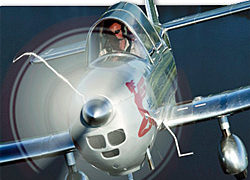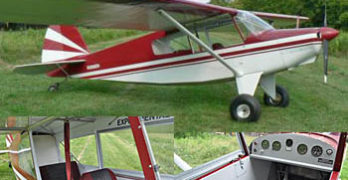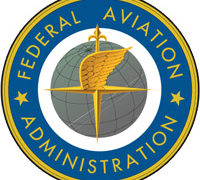Available previously as a kit (more on that below), American Legend recently provided photos proving that the Sulfur Springs, Texas company has now won a Special LSA certificate for the Super Legend, topping our SLSA List at number 133. The model has other differences but a key reason for the name is the Lycoming O-233 engine supplying 115 horsepower that gives a nice boost to its performance on wheels or floats. Super Legend will go up against the CubCrafters Carbon Cub SS (with 180 horsepower) and the Zlin Cub-S (also 180-hp). While it may not provide the same excess of power it is more affordably priced than Carbon Cub SS, although the latter is a highly developed offering that is generous in its use of carbon fiber, as its name implies, and in an overall sense of stylized design.
American Legend noted, “The closed cowl Super Legend has the same power-to-weight ratio as a 150-hp Piper Super Cub.
Search Results for : Texas aircraft
Not finding exactly what you expected? Try our advanced search option.
Select a manufacturer to go straight to all our content about that manufacturer.
Select an aircraft model to go straight to all our content about that model.
LSA Air; Jabiru Service; MGL XTreme; 90th Birthday
Cool It! — Scott Severen of US Aviation — the central Texas general aviation dynamo — is a man on a mission. He showed an AMT FlyCool installation (video) on a Flight Design CTLS at Sun ‘n Fun that was a surprisingly clean installation considering he brought all the air conditioning parts in his airline luggage. By AOPA’s fall Summit, he had refined it considerably (photo). Now the installation features a handsome louvered right side baggage door that brings fresh air in and exhausts warmer air. The panel switches are permanent and in the warm Texas sunshine, the system had great appeal. It adds surprisingly little weight (22 pounds); cost varies by installation but is much less expensive than old style air conditioning systems for airplanes. One downside is a loss of some luggage capacity but for example, a flight school wouldn’t care. Their students could chill instead of sweating through their flying lesson.
Flying Sam; “A Warbird for the LSA Market”
To some it’s a new entry in the LSA race (Sam LS is presently selling kits while pursuing SLSA acceptance). To others the Canadian LSA is a “mini T-6” or a “mini Yak 52.” Either characterization no doubt pleases designer Thierry Zibi. During development he did a thorough job of asking airshow visitors what appealed to them. Now that Sam is flying, it is fair to say that even with the availability of 132 other Light-Sport Aircraft models, Sam LS is unique. At AOPA’s last-ever Summit event in Fort Worth, Texas, I got a chance to take Sam aloft with Thierry overseeing from the aft seat. Short tell: it may look like a miniature warbird, but flies with very solid and pleasant qualities.
As the sun-drenched photos reveal, Thierry’s airplane glistens with polished aluminum, an uncommon appearance on airport ramps loaded with brightly painted aircraft accented with jaunty striping.
Copperstate About to Start; Gaining Importance
Like many deeply involved with aviation I have long marveled that all the best airshows in America seem to be in the Eastern half of the country. Except for the delightful Arlington Fly-in in Washington state and a worthy effort at Golden West plus some other small regional events, the action appears to be “back East.” Given that California has more pilots and airplanes than any other state, how can this be? Especially now that AOPA announced this year’s Summit in Dallas, Texas (October 10-11-12) will be their last one ever, we won’t any more be trekking to Palm Springs, California for what has been the big member organization’s favorite destination. Fortunately, we have the Copperstate Fly-in and Aviation Expo.
On two occasions I’ve attended this event. It isn’t huge like Sun ‘n Fun or AirVenture, and it isn’t in California where more might attend. However, Copperstate is a credible, well established event that serves the southwestern USA.
Rotax BRP In the News; Achieves Milestone
Although Rotax Aircraft Engines successfully power approximately four out of five Light-Sport Aircraft, some in legacy general aviation companies still derisively refer to the liquid-cooled, high-revving, smaller-displacement engines as “just one of those snow mobile engines.” I believe they are woefully under informed but old habits can be hard to break. Many mechanics are expert in working on Lycoming or Continental engines — the powerplants of American aircraft for many decades. However, some of these technicians are not expert on the new technology of a Rotax engine and to divert attention from their lack of expertise some dismiss what they do not know. That is shortsighted as they could be working on and earning an income from servicing Rotax as well. Fortunately, a growing number of mechanics have taken Rotax training (for example, Texas powerhouse US Aviation has six such mechanics). Yet too many GA mechanics still deploy the snowmobile engine pejorative.
Preparing for AirVenture Oshkosh 2013
Recently, our good friends over at General Aviation News reported on the Bearhawk LSA. If you don’t receive GA News’ “The Pulse of Aviation,” I urge you to sign up for it right now (it’s free). Aviators are lucky to have several online news outlets — AVweb, ePilot, eBrief, and eHotline, plus some excellent news websites — but I always anticipate “The Pulse” as I’ve come to admire their speed and rely on their professional journalism. That said, in their recent article they used the phrase “Bearhawk LSA,” no doubt as that’s the way the Austin, Texas company described their model. This is a common error and is worth a short review. An aircraft is only a “LSA” if it has met all ASTM standards and been accepted by the FAA. An aircraft that meets all the parameters of an LSA (weight, speed, etc.) can be flown by someone with a Sport Pilot certificate, making it “Sport Pilot eligible,” to use a phrase coined by EAA’s Ron Wagner.
Still Expanding LSA Seaplane Development
“Isn’t it just a niche market?,” asked a reader in a recent email. The query came after he read about a flurry of new seaplanes and the writer wondered if it could be worth all the investment pouring in to these projects. Development progress in this particular sector-within-a-sector (LSA seaplanes) seems to be far outdistancing development in other parts of the aviation world. So, are efforts to develop increasingly sophisticated LSA seaplanes economically justifiable? It’s a worthy question. Another answer: “Well, why not?” An amphibious LSA seaplane can land on water or land, could fly as fast or nearly as fast as a land plane. They can look cleaner with gear that disappears. They already have another 110 pounds to work with (though admittedly much of that is needed simply to achieve an amphib seaplane and even that is not enough for all manufacturers). If you want an LSA, why not one that’s more versatile?
Summer’s Coming; Cool It, Fellow Pilots!
Across the northern U.S. states and across much of Europe it was a lousy, cold, snowy winter. It seemed everyone I spoke to at Aero in Friedrichshafen, Germany complained about the crappy winter and their laments mirrored those from America’s northlands. However, the weather appears to be going directly from winter to summer. It was warm in Slovenia when we visited Pipistrel and it’s now getting hot across much of the USA. That’s great, perhaps, as it foretells an active flying season. However, as the weather warms, it can get mighty hot in the cockpit and not only because you’re on short final on a gusty day in a responsive LSA.
US Aviation previewed their integration of the AMT FlyCool air conditioning system in the Flight Design CTLS at Sun ‘n Fun 2013. The Dallas-area, Texas company partnered with FlyCool to develop an installation for the Flight Design CTLS.
Towering Inferno
Update 3/22/13 … CHICAGO / Associated Press announced that the FAA put the final list of air traffic control tower closures at 149. The process of shutdown will start early in April. One key point: closures will not force the airports themselves to shut down, but all pilots will use unicom frequencies to communicate their position and intentions to other pilots in the vicinity. “We will work with the airports and the operators to ensure the procedures are in place to maintain the high level of safety at non-towered airports,” FAA Administrator Michael Huerta said in a statement.
In what could be a major impact on smaller regional airports such as Salinas Municipal in California, Lakeland Linder Regional in Florida (home of the Sun ‘n Fun show next month), and Wittman Regional in Wisconsin (home of Oshkosh Airventure), airlines have yet to say whether they will continue offering service to airports that lose tower staff.
Happy New Year LSA News Wrap
CubCrafters Set Records In a second year of modest recovery for the LSA sector, most companies were happy to sell the same as the year before. Against this plain backdrop CubCrafters stands out sharply. The company announced that it delivered 58 new airplanes (52 of which were LSA models), a 23% increase over 2011, and more units than any year in the company’s history. They’re aiming for deliveries of 66 ready-to-fly aircraft this year. CubCrafters’ 2012 deliveries are divided among their three models: Carbon Cub SS, Sport Cub S2, and Top Cub (the latter not a Light-Sport). • They also reported shipping 24 of their Carbon Cub EX kits in 2012, another record. That’s 82 aircraft and makes them likely the light aviation leader for the year (we hope to publish our customary market report soon). CubCrafters General Manager Randy Lervold said, “Despite the economic climate, we’ve managed to defy industry trends.” Congratulations, Team CubCrafters; job well done!
- « Previous Page
- 1
- …
- 8
- 9
- 10
- 11
- 12
- …
- 16
- Next Page »











